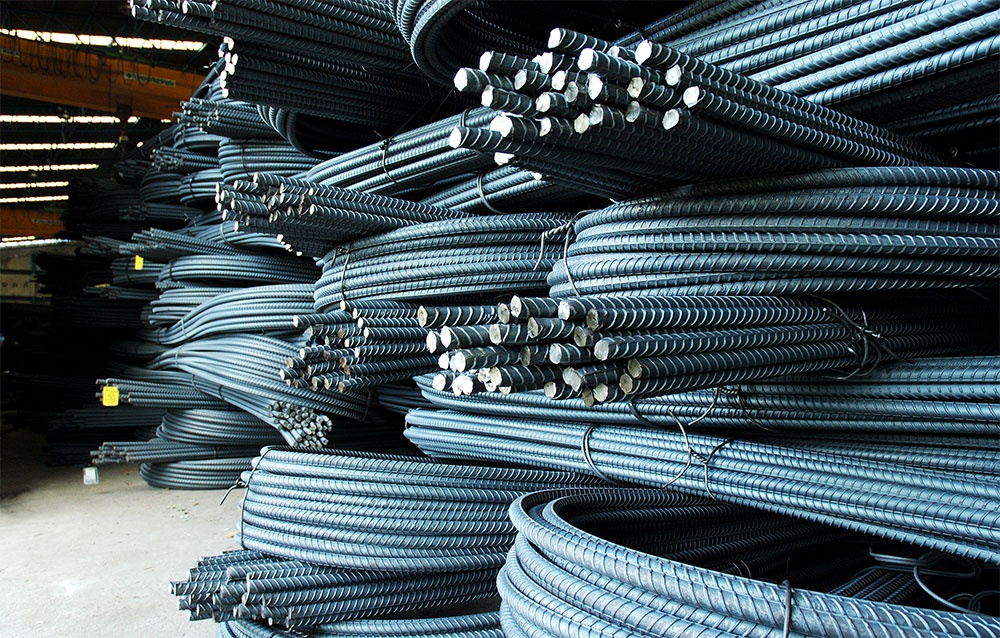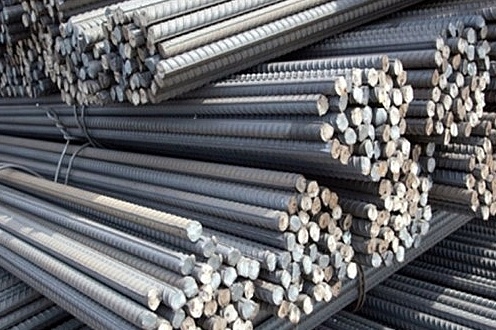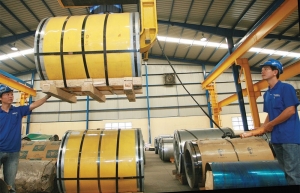Vietnam’s steel producers embracing CBAM transition
In 2021, Vietnam’s steel industry set a record high when exporting steel and iron worth $1.9 billion to the EU. However, Vietnam’s exports of steel into the EU have become more difficult after the EU launched the first phase of the Carbon Border Adjustment Mechanism (CBAM) in October.
 |
| Vietnam’s steel producers embracing CBAM transition |
Now, the EU imposes a levy on all goods imported into the markets of EU countries based on the intensity of greenhouse gas emissions (GHG) in the production process.
In the first phase of CBAM implementation, the EU focuses on imports of certain goods at most significant risk of carbon leakage: cement, iron and steel, aluminium, fertilisers, electricity, and hydrogen. These sectors account for 94 per cent of the EU’s industrial emissions.
During the upcoming period, importers will only have to report the quantity of imported goods and the amount of GHG embedded in their imports, without making any financial payments. From the beginning of 2026, importers will need to purchase a CBAM certificate according to the carbon pricing system in the EU if emissions exceed the bloc’s standards.
GHG expert Huynh Thanh Trung, co-founder and director of LEANWARES Industry Co., Ltd., said, “Similar to previous ISO-standard certificates, the future carbon certificates will be considered as visas for exports of goods into the high-end markets.”
The steel industry has made a significant contribution to the export turnover. In 2021, Vietnam exported 13.1 million tonnes of iron and steel worldwide, worth up to $11.8 billion. In 2022, Vietnam exported approximately 8.4 million tonnes of steel, totalling $7.99 billion, down $3.8 billion on-year.
Steelmakers are increasingly aware of the shift in production to compete in the global market. VAS Group Nghi Son boasts a system of five billet and steel rolling factories with a total annual capacity of 4.35 million tonnes of square billet and 2.5 million tonnes of construction steel. The company deems green manufacturing an inevitable path amid the trend of major markets tightening regulations on imported goods to reduce emissions.
The group has therefore adopted high technology in manufacturing and saved input materials and fuel. Besides that, the company has also applied the world’s top modern waste treatment technology in combination with the state-of-the-art induction heating furnace from Italy’s Danieli to recycle scrap iron and steel.
Thanks to these efforts, VAS Group has secured many orders for demanding markets, with the latest shipment to the US. The production transformation process is taking place across the group’s factories to achieve the requirements of the demanding import markets.
A representative of Hoa Phat Group, Vietnam’s largest steel producer and exporter said, “The shift to green manufacturing is full of challenges for businesses, but there is no other path. At present, businesses are conducting GHG inventories in order to comply with government regulations and meet export restrictions to Europe.”
Nghiem Xuan Da, chairman of the Vietnam Steel Association, said, “The steel industry has made great strides over recent years. In particular, in 2015, Vietnam became the world’s 13th largest raw steel producer and took the lead in ASEAN in terms of the production and consumption of finished steel.”
He noted that the steel industry is responsible for 7 per cent of total national emissions and almost half of industrial processes. However, there is still room for the steel industry to reduce emissions when adopting new technology such as hydrogen energy, electric steelmaking furnaces, and carbon sequestration technology.
Awareness, action, and financial capability are vital to speeding up the greening of steel production. “To maintain a competitive advantage in exporting to the EU and many other markets, steel businesses are actively working with import partners, creating green transformation projects, and taking advantage of capital sources from developed countries to accelerate the shift to green manufacturing,” Da said.
Vietnam’s steel industry boasts a large production capacity, with an annual export of over tens of billions of dollars. Among them, billions of dollars of steel are exported to the EU and demanding markets such as the UK, the US, and Japan on the back of meeting rigorous international standards.
Vietnam is the 11th largest partner in terms of goods imported into the EU. Besides aluminium, steel, and cement, many carbon-intensive industries, such as textiles, garments, footwear, and some agricultural products such as rubber and coffee will also have to adapt to the stricter standards in the EU and possibly in many other markets.
In 2022, Vietnam exported goods worth $47.15 billion to 27 EU member countries, an increase of 17.5 per cent on-year. Vietnam imported goods worth $15.3 billion from the EU. The country recorded a trade surplus of $31.8 billion with the EU.
| The EU is Vietnam’s second-largest export market after the ASEAN region for steel products, accounting for 18.37 per cent of total sales. In 2022, Vietnam exported approximately 8.4 million tonnes of steel, of which the EU accounts for 16 per cent, or roughly 1.3 million tonnes. |
 | Vietnam upholds antidumping tariff on Chinese steel imports Chinese cold-rolled steel products are subjected to anti-dumping tax rates ranging between 4.42 and 25.22 per cent, depending on the exporter. |
 | Steel industry awaits indication of progress The steel sector across Vietnam continues to face a variety of challenges to its growth prospects from multiple angles. |
What the stars mean:
★ Poor ★ ★ Promising ★★★ Good ★★★★ Very good ★★★★★ Exceptional
Related Contents
Latest News
More News
- Global partnerships key to Vietnam’s IFC development (December 26, 2025 | 16:18)
- Vingroup pulls out of bid to invest in North-South high-speed railway (December 26, 2025 | 11:42)
- Strengthening supply chains through trade promotions and customs reform (December 24, 2025 | 14:00)
- PM orders investment model for North–South high-speed rail (December 22, 2025 | 17:43)
- LS Eco Energy to invest in Vietnam rare earth sector (December 22, 2025 | 17:31)
- Government moves to establish International Financial Centre (December 21, 2025 | 21:00)
- Vietnam's IFC to target global investment flows (December 21, 2025 | 18:00)
- Two national hospitals expand capacity with new facilities (December 20, 2025 | 09:00)
- Ha Tinh breaks ground on major Vingroup industrial and energy projects (December 19, 2025 | 18:24)
- EVN launches major power infrastructure projects nationwide (December 19, 2025 | 18:17)

 Tag:
Tag:





















 Mobile Version
Mobile Version